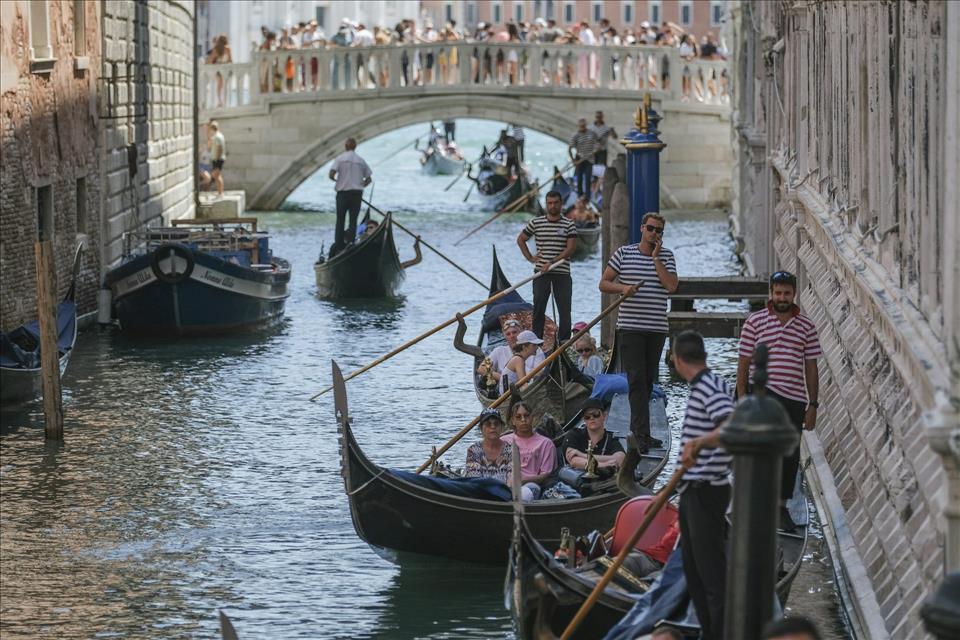
Crowds, Water Guns And Protests: Could 'Slow Tourism' Be The Answer To An Overtourism Backlash?
Bali is overwhelmed by waste and traffic , Australia's sacred sites have suffered environmental damage , New York is facing rising rents due to short-term rentals , and Singapore's scenic spots are becoming clogged with crowds .
Frustrated locals are pushing back – from spraying water at tourists in Barcelona to organising protests in Venice . As the northern hemisphere high season ends, Aotearoa New Zealand is preparing for an influx of visitors ahead of its summer tourism season.
And much like those other tourist hotspots , the government is looking at how to manage the negative effects of tourism on local communities and the environment. This includes tripling the international tourist tax from NZ$35 to $100.
The aim of the increase is to attract tourists who are more mindful of their impact and willing to contribute to its mitigation, while also reducing visitor numbers to protect the country's unique landscapes and cultures.
But are there other ways the tourism industry can evolve to ensure benefits for both travellers and the communities they are visiting? So called“slow travel” could be the answer.
Hunting the perfect photoOvertourism isn't just about too many people in one place. It's also about how people travel.
Instagram-famous landmarks draw massive crowds, disrupting local life and sometimes even leading to closures .
Travellers often pack their itineraries with as many sights as possible, racing from one place to another in a frenzy to capture the perfect photo. This hurried approach not only creates congestion but also limits meaningful engagement with the destination .
And it's not just a numbers game. The way tourists behave also plays a critical role.
A 2019 report from the United Nations raised concerns about trash from tourists in developing small island states, including the Pacific Islands. According to the report, a tourist visiting these communities produced about 7kg of waste a day, compared to about 2.5kg produced by a local.
The issue is not necessarily about travelling less, but about travelling more responsibly . The tourism industry needs to be encouraging travel habits that allow both visitors and locals to enjoy tourism without compromising the integrity of the destination.
The rise of slow travelMindfulness – being fully present in the moment – has gained popularity since the 1970s. The concept has influenced a number of sectors, including slow food , slow fashion , and now slow travel .
It's about experiencing destinations at a relaxed pace, focusing on deeper connections with local cultures and sustainability. This often means staying longer in fewer places and choosing eco-friendly transport.
Understanding slow travel and mindfulness is important because they create richer, more memorable experiences . Fast, hectic travel often leaves little positive impact. Slow immersive travel, on the other hand, fosters lasting memories and reduces overtourism, pollution and cultural damage.
Research shows when we consciously immerse ourselves in our surroundings we can have more meaningful experiences. Surprisingly, even luxury travel – often dismissed as wasteful – can encourage respect and mindfulness for those who invest financially and mentally in their journey, unlike cheaper, mainstream tourism.
Activities such as“forest bathing”, hiking or engaging with local cultures boost wellbeing and meaning , going beyond just“taking a photo for likes”.
This mindful approach can change our behaviour on a personal level . By focusing attention on fewer experiences, travellers can heighten their sense of awe and appreciation, making the travel more memorable.
This idea is evident in“peak experiences”. Disney, for example, creates emotionally-charged moments that stick in visitors' minds. Other experiences, such as“digital detoxes” or pilgrimages can leave a contemplative impression.
By concentrating on a single aspect of a visit, it becomes special and memorable . Even in busy places like Disneyland, focusing on one unique element can make the experience feel slower and more meaningful.
Communities in Spain, Italy and elsewhere have begun protesting the annual influx of tourists. Clara Margais/Getty Images The sustainability of tourism
In the Faroe Islands , slow travel helps protect local traditions and landscapes by encouraging thoughtful visitor behaviour, such as using local guides to minimise environmental impact.
New Zealand can leverage its natural beauty to offer similar immersive experiences. Tramping (hiking), for example, can promote a mindful connection with the environment.
But even here, there needs to be a focus on balancing tourism with preservation. Popular spots, such as the Department of Conservation huts and the Te Araroa Trail, are already becoming crowded . It is essential to educate visitors on responsible practices – such as cleaning equipment – to ensure they understand their role in protecting nature .
Travel that fosters a deeper appreciation for local cultures and environments benefits both visitors and the destinations they explore. The challenge is finding the right balance – encouraging meaningful travel experiences while still ensuring accessibility for all.

Legal Disclaimer:
MENAFN provides the
information “as is” without warranty of any kind. We do not accept
any responsibility or liability for the accuracy, content, images,
videos, licenses, completeness, legality, or reliability of the information
contained in this article. If you have any complaints or copyright
issues related to this article, kindly contact the provider above.

















Comments
No comment